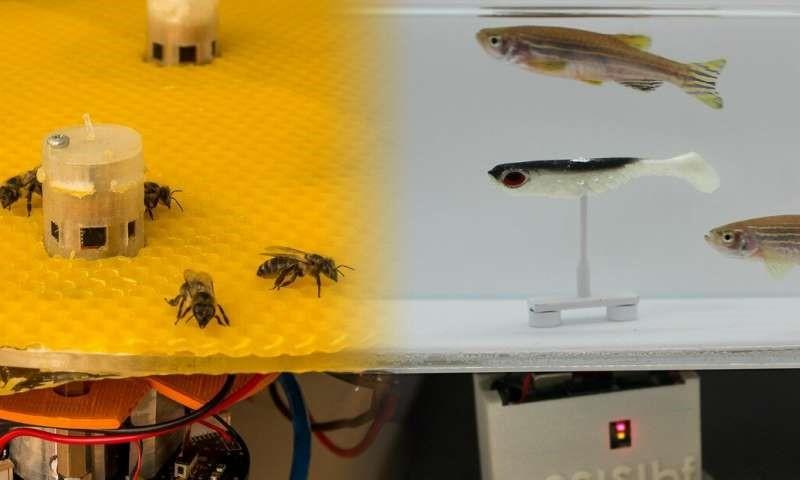When Bees Communicate with Fish for Collective Decision

Image Courtesy: techexplore.com. Image for representational use only.
In a recent study published in Science Robotics, researchers have reportedly established communication between two extremely different species—the bee, that flies in the air, and the fish, which swims in water. The study claimed that not only the two species could communicate, but also could reach a shared decision. This seemingly wild imagination could be brought into reality with the help of robots.
Bees and fish never would have an occasion to meet or interact. The communication process that these species adopted, for that matter, don’t have any commonalities. It becomes extremely difficult to make these remote species interact with each other, and take a collective decision. However, under a project named ASSISIbf, engineers from EPFL (Ecole Polytechnique Federale de Lausanne), Switzerland, and four other European universities could overcome the impossibility.
The bees were located in Austria, and the fish in Switzerland. Through robots, the two species were able to transmit signals back and forth to each other, and slowly started to coordinate their decisions.
“The robots acted as if they were negotiators and interpreters in an international conference. Through the various information exchanges, the two groups of animals gradually came to a shared decision,” said Francesco Mondada of EPFL, one of the researchers of the study.
Robots as the Mediator
In this study, the researchers had robots installed with the population of each species. The robots could talk to the species by means of emitting signals that are specific to one species. The robots in the pool of fish emitted two kinds of signals; one is the visual signal—in terms of different shapes, colours and stripes, and the other is behavioral signals—like acceleration, vibration and tail movements. The robots in the bee colony emitted signals mainly in the form of air movements, vibrations and temperature variations. Both the bees and the fish responded to the signals emitted by the robots; the fish started swimming in a given direction and the bees started swarming around just one location. The robots in the two groups recorded the dynamics of each group, and then exchanged that information with each other. The robots finally could translate that information received as signals that appear to be appropriate for the corresponding species.
During the course of the experiment, the two species could talk to each other when they were 700 kilometre apart. At the beginning, the conversation was chaotic, but as time passed on, they achieved some coordination. After 25 minutes, both the species were synchronised—all the fish were swarming in a counterclockwise direction and all the bees swarming around a terminal.
"The species even started adopting some of each other's characteristics. The bees became a little more restless and less likely to swarm together than usual, and the fish started to group together more than they usually would," said Frank Bonnet, a researcher of EPFL that was involved in the study.
Implications of the Study
This study could pave the way to develop newer techniques to capture and translate biological signals. Animal behavior and how individuals within an ecosystem interact would be better understood if the findings of the study are implemented. The research could also be used to develop better monitoring techniques that can trace natural habitats of animals by using exceptional sensory capabilities of animals.
Get the latest reports & analysis with people's perspective on Protests, movements & deep analytical videos, discussions of the current affairs in your Telegram app. Subscribe to NewsClick's Telegram channel & get Real-Time updates on stories, as they get published on our website.















